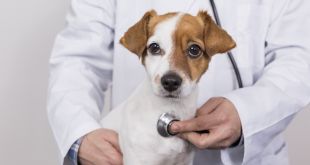Our dogs, like us, are capable of experiencing pain. While most pet owners feel they would be able to tell if their pet was in pain, the fact is that it can be challenging to detect.
Do you know what to look for in terms of warning signs? Because our canines may not communicate with us verbally, we’ve compiled a helpful checklist of physical indicators that might warn us when they may be in discomfort.
Below is a list of the most typical indicators of a dog in pain to help you know what to look for.
Vocalization
When our four-legged pals are in pain, they become noisier. An injured dog may whine, cry, yelp, growl, or even scream to show its agony.
Decreased Social Interaction or Seeking Attention
Changes in behavior can be a powerful signal of pain, and one of the most prevalent is a decrease in social connection.
Is your ordinarily pleasant dog displaying indications of aggression? Do they avoid making eye contact with you or no longer welcome you at the door? Have they lost their desire to play or exhibited a reluctance to go on their usual walk?
On the other hand, some dogs will become too affectionate, constantly demanding love and being all over you. Any of these changes might signal that your dog is in pain and should be evaluated by your veterinarian.
Changes in Posture or Difficulty Moving
Is your dog’s posture changing, such as hunching or becoming rigid? Is there a difference in the way they walk now? Their overall motions have changed, such as appearing to struggle or being sluggish while rising after lying down.
Is it difficult for them to climb the stairs, or are they less active than usual? These are all indications that your dog is in pain.
Some dogs may also refuse to shift from an established posture. Any attempts to compel them may result in indications of hostility, so always be aware of any warning signs (such as growling) your pet may be giving you.
Decreased Appetite
A decreased appetite, particularly if your dog has traditionally liked their food, is a frequent sign of pain. Difficulty chewing, drinking less or more water, and weight fluctuations indicate that a veterinarian should examine your pet.
Changes in Grooming Behavior
When a dog is injured, its initial impulse is to clean and care for the wound by licking it. Dogs may lick the affected region to cure themselves even if the injury is not apparent and the pain is internal.
An example would be someone licking or chewing their knee after tearing a ligament. It is always recommended to consult your veterinarian if your dog is persistently licking or chewing an area.
Changes in Sleeping Habits and Restlessness
Is your dog no longer sleeping as well as he used to? When a dog is in pain, they tend to sleep more. It might be their body’s attempt to heal, or it could be challenging for them to move and be active.
Other dogs may show signs of restlessness and an inability to relax. When your dogs are in pain, they may find sitting or lying difficult. They may be awkward or have difficulty remaining in one position. For example, they may sit or lie down but then get up and walk about practically quickly.
Shaking or Trembling
Don’t assume your dog’s trembling or shaking is due to a cold or aging. Both can be symptoms of pain or something more serious, such as poisoning, pancreatitis, or renal disease.
For example, dogs who have consumed significant amounts of chocolate, moldy compost, or the sugar-free sweetener xylitol frequently have severe muscular tremors.
Whimpering and Whining
The sound has the potential to crush your heart. Some dogs stay stoically silent while in pain, but others, particularly young pups that have not previously encountered physical distress, may whine and scream.
Your presence may provide them comfort and cause them to cease complaining. However, it does not imply that they are no longer in pain.
Arched Back
If he arches his back, your dog is in pain and tucks his tummy up and under. This behavior frequently implies stomach distress, but it can also suggest back pain, such as a spine injury or pinched nerve, or anal pain produced by anal sac glands that are excessively full.
According to the ilovechihuahua.dog website, a semi-permanent, arched posture—as opposed to the leisurely-type stretching that dogs frequently do—is an emergency, and you should contact your veterinarian immediately.
Physical Changes
There are other less visible physical indications that your dog is in pain. Heavy breathing or shallow gasping, an elevated heart rate, and bloodshot eyes are symptoms. The swelling of their paws, legs, and cheeks is another sign that they are in pain.
If your dog exhibits any of the following signs and you suspect they are in pain, get veterinarian care as soon as possible. Human pain relievers may be exceedingly hazardous to dogs, so avoid treating your dog yourself.
Pain can develop from various causes, and as a result, several treatment options are available based on the origin of the pain. Your veterinarian will be able to offer the best treatment strategy for your pet’s comfort.

 DogExpress
DogExpress


















 in Chandigarh, India.
in Chandigarh, India. 
